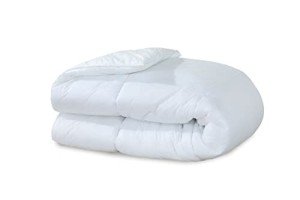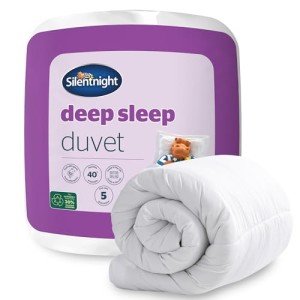As the winter season approaches, staying warm and cozy becomes a priority for many. One essential item that can significantly enhance your comfort level during those chilly nights is a high-quality duvet. A cozy hypoallergenic single duvet stands out for its dual benefits: providing warmth while minimizing allergic reactions. In this comprehensive guide, we delve into the advantages, features, and considerations of choosing the perfect duvet for winter.
Understanding Hypoallergenic Duvets
Hypoallergenic duvets are specially designed to reduce the likelihood of allergic reactions. They are made with materials that resist dust mites, mold, and other allergens, making them an excellent choice for individuals with allergies or sensitivities. These duvets offer comfort and protection, which makes them ideal for a cozy winter experience.
Benefits of Hypoallergenic Duvets
Here are some key benefits of using a hypoallergenic duvet:
- Allergy Management: Hypoallergenic materials reduce exposure to allergens, promoting a healthier sleeping environment.
- Comfort: Many hypoallergenic duvets are crafted with soft and breathable fabrics, ensuring a comfortable sleep.
- Easy Maintenance: Most hypoallergenic duvets can be machine washed, making them easy to care for and maintain hygiene.
- Durability: These duvets are often made from high-quality materials that withstand wear and tear, ensuring a long-lasting product.
Choosing the Right Hypoallergenic Single Duvet
When selecting a cozy hypoallergenic single duvet for winter, there are several factors to consider. The following table outlines the key considerations:
| Factor | Description |
|---|---|
| Material | Look for materials such as microfiber, cotton, or bamboo. These are often hypoallergenic and provide great insulation. |
| Fill Type | Down alternative fills, such as synthetic fibers or polyester, provide warmth without the allergens associated with natural down. |
| Duvet Tog Rating | The tog rating indicates the duvet's warmth; for winter, a tog rating between 10 to 13.5 is suitable. |
| Size | Ensure the duvet size matches your bed size; single duvets typically measure 135 cm x 200 cm (53 in x 79 in). |
| Care Instructions | Check if the duvet is machine washable and whether it can be tumble dried for convenient care. |
| Price Range | Determine your budget, as hypoallergenic duvets are available across various price ranges. |
Recommended Materials for Duvets
The choice of material plays a significant role in the suitability of a duvet. Here are some popular materials used in hypoallergenic single duvets:
- Microfiber: Soft, durable, and resistant to dust and allergens.
- Cotton: Breathable and naturally hypoallergenic, making it comfortable for all seasons.
- Bamboo: Naturally hypoallergenic and effective at regulating temperature.
- Synthetic Fibers: Such as polyester, these are commonly used in faux down alternatives.
Tips for Maintaining Your Hypoallergenic Duvet
Proper maintenance enhances the lifespan of your duvet while ensuring it remains clean and effective. Consider the following tips for maintaining your cozy hypoallergenic single duvet:
- Regular Cleaning: Wash your duvet according to the care instructions, usually every 2 to 6 months.
- Use a Duvet Cover: Protect your duvet from dust and stains by using a washable duvet cover.
- Air Out Your Duvet: Regularly air out your duvet on a sunny day to eliminate dampness and refresh it.
- Store Properly: When not in use, store your duvet in a breathable bag to prevent moisture build-up.
- Spot Clean: For small stains, gently spot clean with a mild detergent and water.
FAQs About Cozy Hypoallergenic Single Duvets
1. How do I know if a duvet is hypoallergenic?
Look for labels that specifically mention “hypoallergenic” or check for certifications that indicate the absence of allergens.
2. Can hypoallergenic duvets be washed?
Yes, most hypoallergenic duvets are machine washable, but it’s essential to follow the care instructions provided by the manufacturer.
3. What is the best material for a winter duvet?
Down alternative materials such as microfiber, polyester, or shredded memory foam are excellent options for winter due to their insulating properties.
4. How thick should a winter duvet be?
A winter duvet typically has a tog rating between 10 to 13.5, indicating it is thick enough to keep you warm without overheating.
5. How can I tell if my duvet needs replacing?
Signs that your duvet needs replacing include lumps in the fill, an unpleasant odor, or if it no longer provides the warmth and comfort you expect.
Investing in a cozy hypoallergenic single duvet for winter is a smart choice for anyone seeking warmth and comfort while minimizing allergic reactions. By considering factors such as material, fill type, and maintenance, you can find a duvet that perfectly suits your needs. With the right duvet, you can look forward to a restful, cozy winter filled with peaceful nights and comfortable days.
Ultimately, the key to a delightful winter experience lies not just in the cozy clothes you wear but also in the quality of your sleep environment. With a hypoallergenic single duvet in your arsenal, you will be set for warmth, comfort, and restful slumber all winter long!






